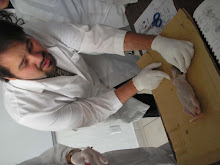SUMMARY
On today´s class we saw the two existing kind of cells, prokaryotic and eukaryotic.
Some of their differences and similarities between these 2 types of cells:
Prokaryotic
-Mitosis
-Has membrane
-No nucleus
-Cell wall (complex)
Eukaryotic
-Nucleus
-Has membranes
-Mitosis and meiosis
-Chromosomes (paired-linear)
-Cell wall (not all), only in plants.
-Organelles
There are 2 types of eukaryotic cells: animal and plant cells.
Plant cells
-Are in plants and fungi.
-They compose the cell wall with cellulose (glucose+glucose+glucose)
-Have chloroplasts, which give plants a bright green color, and that are involved in photosynthesis.
-Vacuole is a big storage compartment that takes most of the cell space
Animal cells
.-Are in animals and protozoan.
-They don´t have a cell wall.
-They have centrioles.
-Centrioles are needed to make cilia and flagella.
-Flagella look like a single tail and cilia like many little hairs.
-There are rare cases in which a single cell has both, cilia and flagella.
-Centrioles are built from a cylindrical array of 9 microtubules, each of which has attached to it 2 partial microtubules.
We also saw some videos of amoebae. It is really rare the way they kind of eat other cells. They start spreading until they enclose the other cell. Later this other cell realizes that it can´t get out. But you can understand better if you watch the following videos:
How amoeba feed:
http://www.youtube.com/watch?
Flagella and cilia:
http://www.youtube.com/watch?
Amoeba in motion:
http://www.youtube.com/watch?
Stephanie Sotelo

No hay comentarios:
Publicar un comentario